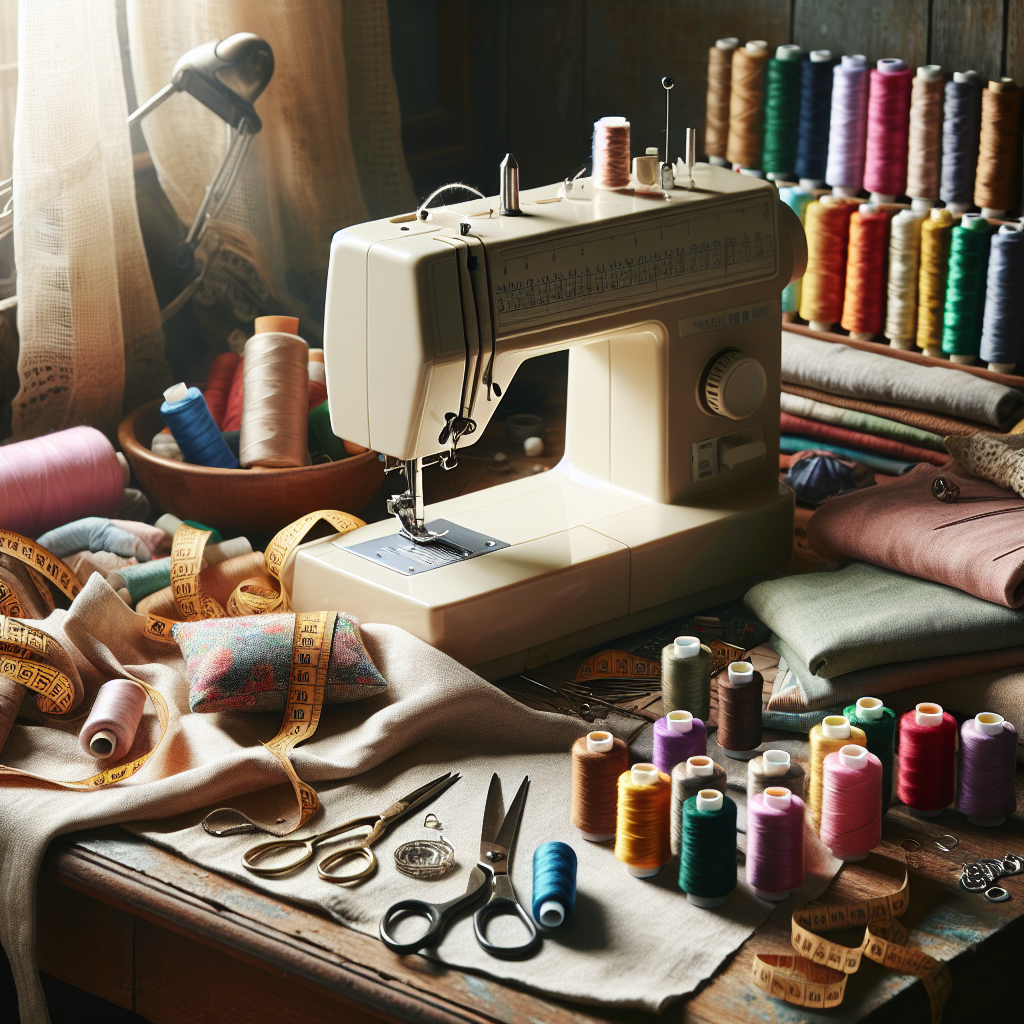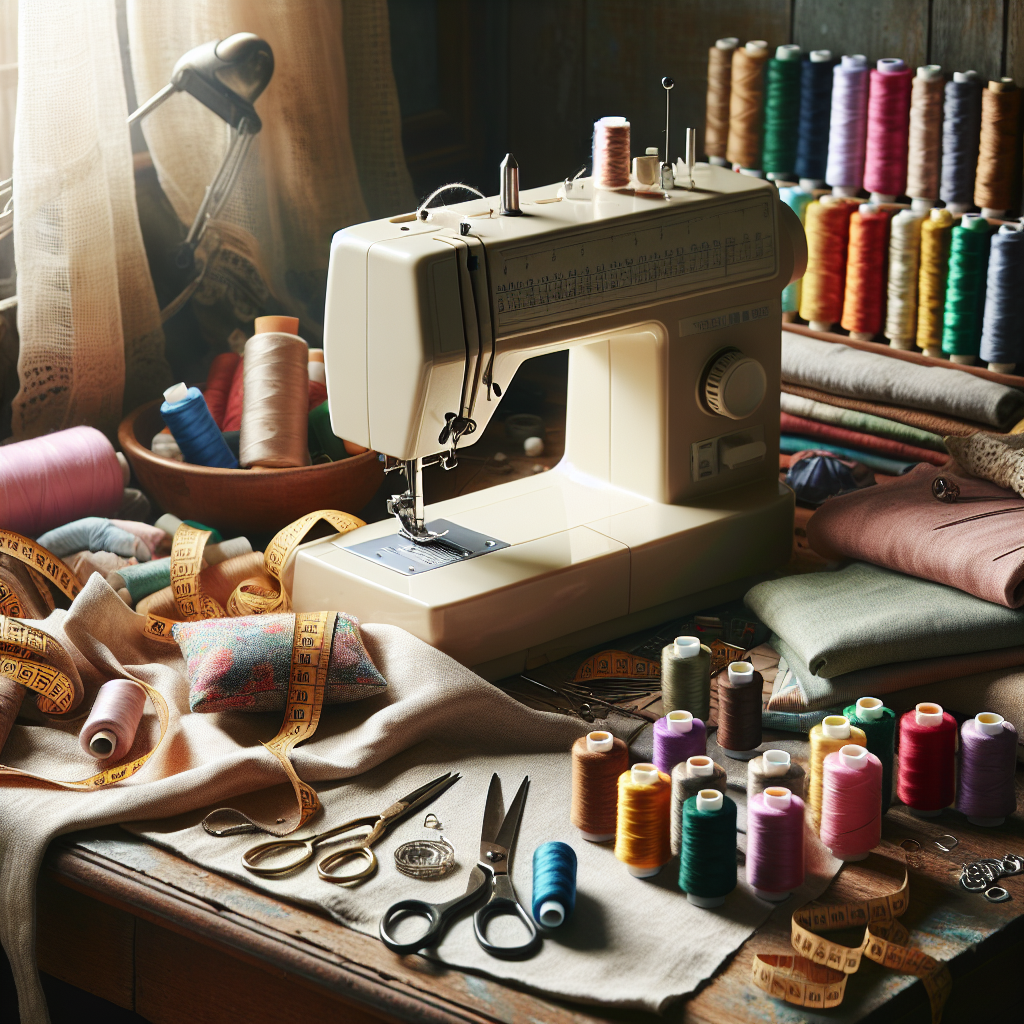Are you a beginner eager to start your sewing journey but unsure where to begin? Look no further! In this article, we will guide you through the exciting world of sewing and help you decide what should be your first sewing project. Whether you are interested in garments or home decor, we have got you covered with some fantastic suggestions that will boost your confidence and fuel your passion for this timeless craft. Get ready to unleash your creativity and create something truly special!

Choosing the Right Project
When you are just starting out with sewing, it’s important to choose the right projects that will set you up for success. There are a few factors to consider when selecting your first sewing project, including your skill level, the complexity of the project, and your personal preferences. By taking these factors into account, you can ensure that you choose a project that is both enjoyable and achievable.
Factors to Consider
First and foremost, it’s important to consider your skill level as a beginner. Starting with simple projects that use basic sewing techniques will help you build your confidence and develop your sewing skills. You want to choose projects that are within your current abilities so that you can complete them successfully and feel a sense of accomplishment.
Another factor to consider is the complexity of the project. As a beginner, you’ll want to choose projects that have clear instructions and are not too overwhelming. Look for projects that have simple patterns and straightforward construction techniques. This will make it easier for you to follow along and understand the steps involved in completing the project.
Lastly, consider your own personal preferences when choosing a sewing project. Think about what types of items you would like to sew and what you will actually use or enjoy making. Sewing should be a fun and fulfilling hobby, so choosing projects that align with your interests and preferences will make the experience more enjoyable for you.
Start with Simple Patterns
To get started with sewing, it’s a good idea to begin with simple patterns. These patterns typically involve fewer pieces and simpler construction techniques, making them ideal for beginners. Starting with simple patterns will allow you to focus on mastering basic sewing skills and techniques before moving on to more complex projects.
Essential Sewing Tools
As you begin your sewing journey, it’s important to have the right tools to ensure successful and enjoyable sewing projects. Here are some essential sewing tools that every beginner should have:
Sewing Machine
A sewing machine is a must-have tool for any beginner sewist. It allows you to stitch fabric quickly and efficiently, making your sewing projects much faster and more precise. Look for a sewing machine that is user-friendly and has basic features like different stitch options and adjustable sewing speed.
Fabric Scissors
Fabric scissors are specially designed to cut fabric cleanly and accurately. Investing in a good pair of fabric scissors is essential for successful sewing projects. Make sure to keep them separate from other scissors in your home, as using them to cut paper or other materials can dull the blades.
Pins and Needles
Pins and needles are used to hold fabric pieces together before sewing. They come in different lengths and thicknesses, so it’s good to have a variety on hand. Needles with a larger eye are easier to thread, especially for beginners. Keep a pincushion or magnetic pin holder nearby to safely store your pins and needles.
Seam Ripper
Mistakes happen, and a seam ripper is your best friend when it comes to correcting them. This handy tool allows you to remove stitches quickly and easily without damaging the fabric. Having a seam ripper on hand will save you time and frustration when you need to undo stitches and start over.
Measuring Tape
Accurate measurements are crucial in sewing, and a measuring tape is an essential tool for taking precise measurements. Look for a flexible measuring tape with both metric and imperial measurements. This will come in handy when measuring fabric, body measurements, or pattern pieces.
Iron
A well-pressed fabric makes a world of difference in the finished look of your sewing projects. An iron is essential for pressing fabric, seams, and hems, giving your garments a professional appearance. Make sure to choose an iron with adjustable heat settings and a steam function for more effective results.
Thread
Thread is the backbone of any sewing project and it’s important to have a good selection of thread colors on hand. Choose high-quality, polyester thread that matches your fabric. It’s always a good idea to have a variety of colors to choose from to ensure a seamless finish to your projects.
Simple Sewing Projects for Beginners
Now that you have your essential sewing tools ready, it’s time to start sewing! Here are some simple sewing projects that are perfect for beginners:
Pillowcase
A pillowcase is a great project for beginners as it only requires straight stitching and basic measurements. You can choose fun and colorful fabrics to match your bedroom decor or make personalized gifts for friends and family.
Tote Bag
A tote bag is another beginner-friendly project that can be customized to suit your style. It typically involves simple construction techniques like straight stitching and creating handles. Tote bags are practical and versatile, making them a useful addition to your sewing repertoire.
Elastic Waist Skirt
An elastic waist skirt is a simple and comfortable garment that is perfect for beginners to try their hand at making clothing. It only requires basic measurements and straight stitching, making it a great project for learning garment construction techniques.
Apron
Making an apron is a fun and practical project for beginners. Aprons can be customized with different fabric patterns and trims, allowing you to add your personal touch. As a beginner sewer, an apron provides an opportunity to practice straight stitching and attaching straps.
Drawstring Bag
A drawstring bag is a versatile and useful project for beginners. It can be used for storing small items like jewelry or as a gift bag. The construction of a drawstring bag involves simple sewing techniques like straight stitching and creating a casing for the drawstring.
Building Skills with Intermediate Projects
Once you have gained confidence with simple sewing projects, it’s time to challenge yourself with some intermediate projects. These projects will help you build on your sewing skills and introduce new techniques. Here are some intermediate projects to consider:
Basic Dress
A basic dress is a great project for building garment construction skills. This project will introduce you to sewing darts, setting sleeves, and attaching a zipper. Choose a simple dress pattern with minimal details to start with and gradually progress to more complex designs as you gain confidence.
Zipper Pouch
A zipper pouch is a useful and versatile project that allows you to practice sewing zippers. It can be used to store small items like makeup, toiletries, or as a pencil case. Choose a fun fabric and experiment with different zipper colors to create personalized pouches.
Table Runner
A table runner is a great way to add a decorative touch to your dining table. This project will introduce you to sewing long seams and creating mitered corners. Experiment with different fabric patterns and colors to match your dining decor.
Pajama Pants
Pajama pants are a comfortable and practical project for intermediate sewists. This project will teach you how to create an elastic waistband, sew inseam pockets, and sew tapered legs. Choose a soft, breathable fabric for maximum comfort.
Specialty Projects for Advanced Beginners
After completing some intermediate projects and gaining more confidence in your sewing skills, you can challenge yourself further with specialty projects. These projects will require more time and attention to detail. Here are some specialty projects for advanced beginners:
Quilt
A quilt is a beautiful and intricate project that requires precision and attention to detail. This project will introduce you to quilting techniques like piecing, applique, and quilting. Start with a small quilt and gradually work your way up to larger and more complex designs.
Duffle Bag
A duffle bag is a practical and durable project that will challenge your sewing skills. This project will require you to sew curves, attach handles and pockets, and create a lining. Choose a sturdy fabric for the outer shell and a fun pattern for the lining.
Messenger Bag
A messenger bag is a stylish and functional project for advanced beginners. This project will teach you how to sew different pockets, attach a magnetic snap closure, and create an adjustable shoulder strap. Choose a fabric that reflects your personal style and experiment with different pockets and strap designs.
Baby Blanket
A baby blanket is a meaningful and heartfelt project that makes a great gift. This project will introduce you to sewing with different fabrics, such as flannel or minky, and finishing edges with binding or bias tape. Choose soft fabrics in coordinating colors or patterns to create a cozy and personalized blanket.
Sewing Resources
As you continue to learn and improve your sewing skills, it’s important to have access to helpful resources. Here are some sewing resources that you can explore:
Sewing Blogs and Websites
There are many sewing blogs and websites available that offer tutorials, patterns, and inspiration. These platforms are a great way to learn new techniques, discover project ideas, and connect with other sewing enthusiasts. Some popular sewing blogs include Tilly and the Buttons, Colette Patterns, and Sewaholic.
Sewing Classes
Taking sewing classes can provide you with hands-on instruction and guidance from experienced teachers. Local fabric stores, community centers, and online platforms offer a variety of sewing classes for all skill levels. These classes can help you improve your sewing techniques, learn new skills, and build your sewing confidence.
Online Tutorials and Videos
The internet is full of free sewing tutorials and videos that cover a wide range of sewing topics. YouTube channels like “With Wendy”, “Sew Over It”, and “Professor Pincushion” offer step-by-step video tutorials for various sewing projects and techniques. These online resources are a valuable tool for visual learners and can help you expand your sewing knowledge.
As you embark on your sewing journey, remember to have fun, be patient with yourself, and celebrate your progress. With the right projects, tools, and resources, you’ll be able to develop your sewing skills and create beautiful handmade items. Happy sewing!

